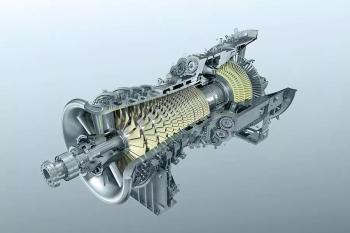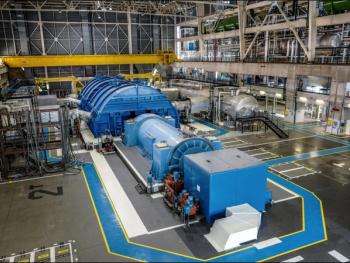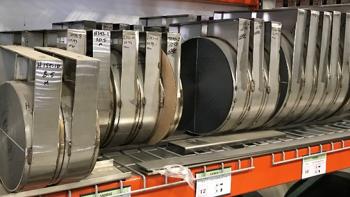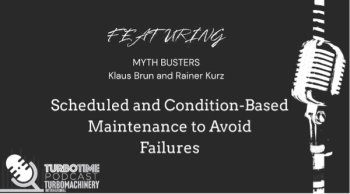
Basics of turbomachinery testing
Below are excerpts from the tutorial, “Shop rotordynamic testing: Options, objectives, benefits and practices” presented by John A Kocur, Jr., of ExxonMobile Research and Engineering and C Hunter Cloud of BRG Machinery Consulting at METS III in Qatar.
Shop acceptance testing has long been used as the “final” check of the turbomachinery design and is required for all special purpose equipment. With the advancement of computational methods, failure rates during testing have been greatly reduced. However, experience has taught us analytical methods alone are insufficient to guarantee the “right the first time” philosophy that many reliability systems employ. Whether used to provide data to baseline prototype equipment, to benchmark extensions of current experience limits, or for verification of proven practices, testing remains an integral part of all reliability systems.
Understanding the dynamic behavior is critical in determining the reliability/operability of rotating equipment. Whether designing a pump, compressor, turbine, motor or generator, all rotating machinery share the same need to accurately predict and measure dynamic behavior. Literature is swamped with failures that resulted from both inadequate design and testing methodologies. While the potential for failure originates at the design stage, testing represents the final step to identify that potential. The importance of efficiently employing both cannot be understated.
Two classes of dynamic behavior
Turbomachinery is dominated by two classes of dynamic behavior; rotordynamics and fluid dynamics. As their names imply, each focuses on a specific dynamic behavior; rotordynamics on the rotating system’s vibration and fluid dynamics on the mechanical interaction with the working fluid. As our depth of understanding increases, the more interrelated these behaviors become. Decisions made in the design of one can impact the other with sometimes disastrous effects. Nowhere is this more evident than centrifugal equipment, especially compression.
Rotordynamic behavior testing involves both direct measurement and inference. Direct measurement of the vibration is typically made at the journal locations. Internal vibration levels at other critical locations can only be inferred from these measurements using the rotordynamic predictions. Thus, industrial specifications determining fit for purpose rely on the accuracy of rotordynamic predictions where direct measurement is impractical or otherwise impossible in an industrial setting. Testing to confirm rotordynamic prediction and behavior provides both the purchaser and vendor the confidence that the design will meet project expectations.
Shop testing
Rotordynamic shop testing has several options available to the project during acceptance tests at the vendor’s shop. These options include tests to demonstrate operating behavior at a specific condition (mechanical run, string and full load/Type 1 testing) and verification testing to validate unbalance response and stability predictions. Such testing has numerous advantages; the most important being the avoidance of production disruptions at the job site. Each test option has associated costs as well as limitations as to what lateral vibration characteristics are revealed. Understanding these factors is vital to efficiently mitigate the risks associated with the purchased equipment.
Application of best practices and an understanding of the industrial (API) test requirements are needed to derive the maximum benefit of each test option. The best practice not only involves the test procedure but also the associated analytical methods used to post process the measurement information.
Whether performing a simple mechanical run test or more complex stability verification during ASME Type I testing, ensuring that a logical, repeatable and proven methodology is followed produces reliable evidence to confirm the rotordynamic model and lateral vibration performance.
Test options can be separated into two categories; tests that reveal portions of the dynamic behavior of the equipment to specific operating conditions (Vibration Demonstration Tests) and those used to verify the analytical predictions of that behavior (Design Verification Tests). API mechanical run, string and Type I (or full load/full pressure) tests reveal the rotordynamic behavior of the equipment for a given set of conditions. These are used specifically to determine acceptability of the design in a pass/fail mode. Unbalance response and stability verification testing is used to confirm (or provide confidence in) the rotordynamic model and analysis.
Confidence in the model permits extrapolation of the design (vendor) and operation (purchaser) beyond the machine’s as built and specific shop test conditions.
The need for rotordynamic testing stems from several objectives; to prove the behavior of the machine, to test the accuracy of the vendor’s predictions and to identify problems before the machine is put into operation. The decision to test and which objectives to pursue result from several factors related to the application: These factors are:
Risk-consequence analysis considering the following:
- Impact on operations given failure or performance deficiencies
- Outage length due to location
- Experience with similar services
- Safety, Health and Environment (SHE) impact of the project
- Technology application experience (vendor or user)
- Prototype equipment
- New application of the technology
- New arrangement
- Variability of process conditions
- Rotordynamic analysis results
Rotordynamic testing options
Fundamentally, there are two types of testing options available for lateral rotordynamic assessment. The first type, referred to as vibration demonstration tests, demonstrates the behavior of the as-built machine and/or train for a specific set of operating conditions. Generally, only the site specific instrumentation is used to measure lateral vibration behavior.
The tests do not address the accuracy of the model or tools used to predict the rotordynamic behavior, nor do they attempt to estimate or determine the robustness of the design. Those that fall into this category are:
- Mechanical Run – an example is the API required mechanical test
- String – API 617 refers to this as a complete unit test
- Full load/Full pressure – Referred to as a Type I test by ASME
Many important aspects of the rotordynamic behavior cannot be practically measured (i.e. internal vibration levels, separation margin to modes above operating speed) nor can every possible operating condition or combination of assembly/machining tolerances be tested. To fully understand the acceptability of the design and the rotordynamic behavior, we must rely on the accuracy of the rotordynamic analysis.
Consequently, tests to determine the accuracy of those predictions were developed. These additional tests were developed to provide more than a pass/fail test, which is essentially what the vibration demonstration tests are. They were implemented to determine the robustness of the design.
This is particularly useful when operating conditions are widely variable or when design experience limits are exceeded. The second type of testing option is referred to as design verification tests with the two most prevalent being:
- Unbalance response – This test would include the more invasive testing required by API
- Stability – Not currently specified by API standards.
Verification testing also has the options of where these tests can be performed. In either case, the tests may be performed in a high speed balance bunker, during the mechanical test or during the full load testing. Each option adds additional considerations in what can be measured, dynamic effects included in the test and what portion of the dynamic behavior is analyzed.
Newsletter
Power your knowledge with the latest in turbine technology, engineering advances, and energy solutions—subscribe to Turbomachinery International today.




